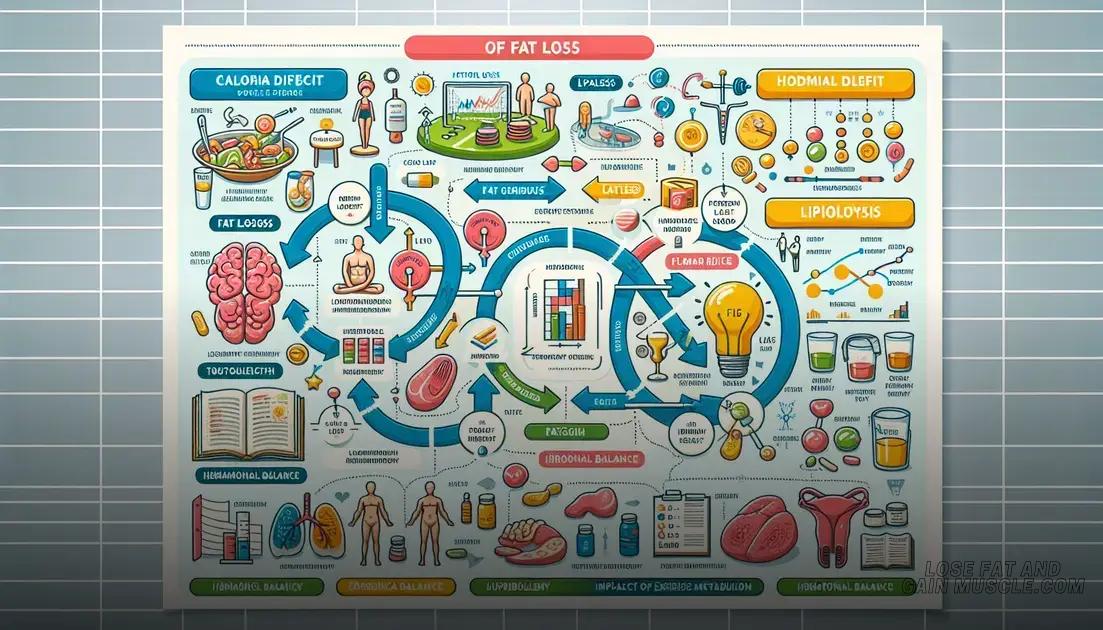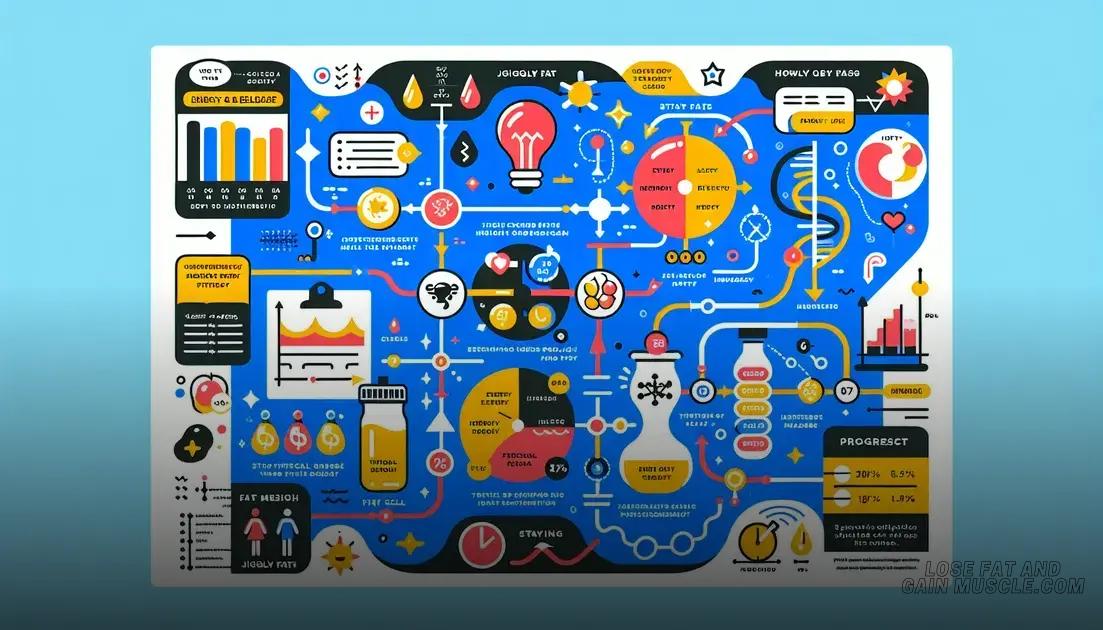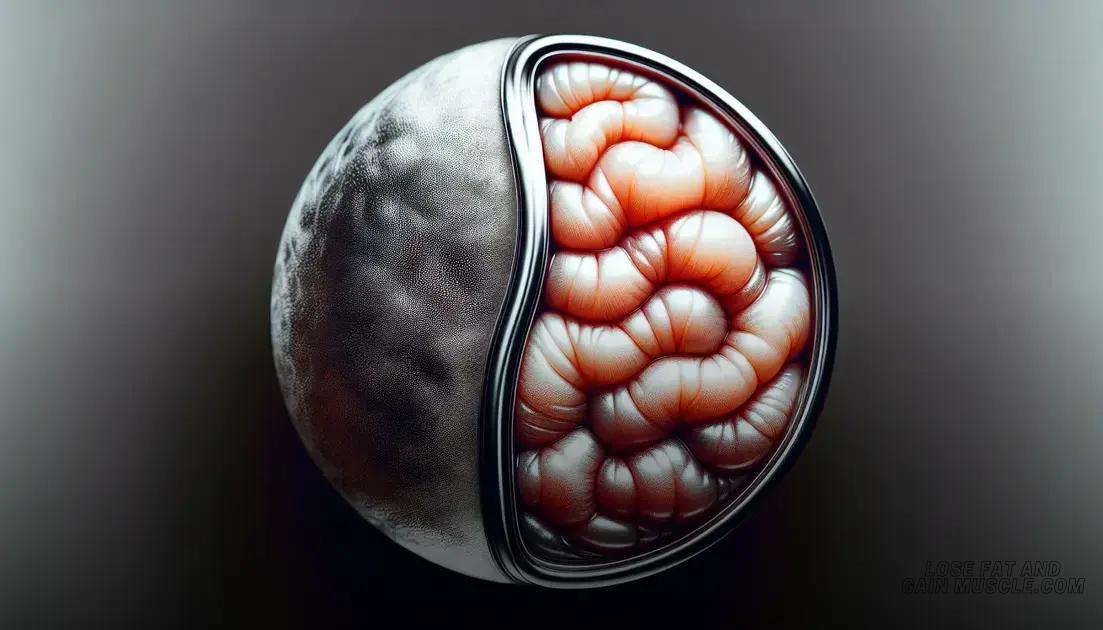Does Fat Get Jiggly Before You Lose It? Unraveling the Mystery
Yes, fat can feel jiggly before you lose it as your body breaks down stored fat. This texture change is normal, but does not always directly indicate weight loss progress. Understanding and tracking overall changes is crucial in your fat loss journey.
Have you ever wondered, does fat get jiggly before you lose it? It’s a common question many people ask when embarking on their weight loss journey. The body undergoes various changes during fat loss, and understanding these changes can be crucial for motivation and realistic expectations. In this article, we will delve into the science behind fat loss, explore whether jiggly fat indicates progress, and provide effective strategies to help you on your journey.
Understanding Body Fat and Its Behavior
The human body stores energy in the form of fat, which acts as a reserve for when we need extra fuel. This body fat varies in consistency and behavior depending on several factors. Understanding body fat is essential when considering weight loss.
What is Body Fat?
Body fat is composed of adipose tissue, which serves as insulation and protects your organs. There are two main types: subcutaneous fat, found under the skin, and visceral fat, located around internal organs. Both types play roles in health and metabolism.
How Does Fat Change?
As you go through the weight loss process, fat cells can change in size. Initially, fat cells shrink, and this can cause the appearance of looseness or jigglyness. Fat can become jiggly as it breaks down and releases stored energy. However, how noticeable this change is can vary based on genetics, skin elasticity, and age.
The Role of Water Weight
Another factor influencing the appearance of fat is water retention. When starting a diet or exercise program, you might notice fluctuations in weight due to changes in your body’s water levels, making the fat appear softer or jiggly.
Psychological Perspectives
It’s important to remember that how we perceive fat can also be influenced by psychological factors. Body image plays a significant role in how we view the changes in our fat. Understanding these behaviors can help in addressing body image concerns during weight loss.
Conclusion on Understanding Body Fat
In summary, body fat has distinct behaviors and changes that are important to grasp, especially when embarking on a weight loss journey. Knowing how fat behaves in our bodies can help us set realistic expectations and foster a more positive mindset towards achieving our health goals.
The Science of Fat Loss Explained

The science of fat loss is complex but can be understood with a few key principles. Fat loss occurs when the body uses stored fat for energy instead of relying on incoming calories. This process is often called caloric deficit.
How Caloric Deficit Works
Your body needs a certain number of calories to function each day. When you consume fewer calories than your body requires for energy, it starts to use fat stores. This leads to fat loss over time. It’s important to maintain a balanced intake to ensure your body gets necessary nutrients.
Fat Metabolism
When fat is broken down, it undergoes a process called lipolysis. During this process, fat cells release fatty acids and glycerol into the bloodstream. These components can then be used by the body as energy. Understanding lipolysis is essential to grasp how fat loss works.
The Role of Hormones
Hormones play a crucial role in fat loss. Insulin, for example, helps regulate fat storage. When insulin levels are high, fat burning decreases. Conversely, hormones like glucagon encourage fat breakdown, emphasizing a balanced diet.
Exercise and Fat Loss
Exercise significantly impacts fat loss by increasing the number of calories burned. Both aerobic exercises and strength training contribute to fat loss. The more muscle mass you have, the more calories your body burns at rest.
Importance of Nutrition
A well-rounded diet full of whole foods, such as fruits, vegetables, lean proteins, and healthy fats, aids in fat loss. The nutrients in these foods help manage hunger and energy levels while supporting the body’s metabolic processes.
Realistic Expectations
Finally, it is essential to set realistic expectations for fat loss. Understanding that healthy, sustainable weight loss often occurs at a rate of 1 to 2 pounds per week can help maintain motivation and a positive mindset throughout your journey.
Symptoms of Fat Changes Before Weight Loss
Identifying the symptoms of fat changes before noticeable weight loss can help you understand your body better. As you start your weight loss journey, you may observe several changes in your body fat.
Increased Softness
One common symptom is the increased softness of fat in certain areas, often described as jiggly fat. This occurs when fat cells begin to release their stored energy, making the fat feel less firm than before.
Fluctuating Weight
Weight can fluctuate frequently on your scale. This may be due to water weight, but it can also signal the start of releasing stored fat. These changes are a normal part of the process and do not always reflect true fat loss.
Skin Changes
As fat begins to change, you might notice your skin takes on different characteristics. Areas where you hold more fat may feel smoother or appear looser. This can be a sign of the fat breaking down and changing state.
Changes in Body Measurements
Another symptom is changes in body measurements, even if the scale doesn’t budge much. For example, your waist or hip measurements may decrease even when weight remains stable. This reflects the shifting of body fat.
Feeling More Energetic
As your body begins to shed fat, you may also experience increased energy levels. This boost can be due to improved metabolism and the body adjusting to using fat as a fuel source more efficiently.
Emotional Changes
Finally, many people notice emotional changes during weight loss. As the body starts changing, feelings of excitement and motivation may arise, contributing to a more positive outlook.
Is Jiggly Fat a Sign of Weight Loss?

The question of whether jiggly fat indicates weight loss is common among those trying to shed pounds. While jiggly fat can signify changes in the body, it doesn’t always mean you are losing weight.
Understanding Jiggly Fat
Jiggly fat often occurs when fat cells release stored energy and shrink in size. This reaction can happen during your weight loss journey, particularly when your body begins to burn through stored fat. However, the presence of jiggly fat can also depend on various factors like skin elasticity and genetics.
Fat Loss Can Be Gradual
During the weight loss process, many people notice their fat becoming softer before they see actual results on the scale. This means that while a person may have jiggly fat, significant fat loss might not yet be visible. Remember, fat loss occurs at different rates for everyone.
Water Weight Matters
Another factor to consider is water weight. Sometimes, your body can retain water due to changes in diet, exercise, or hormonal fluctuations. This retention can give the appearance of jiggly fat even when you are effectively losing weight.
Real Signs of Weight Loss
Real indicators of weight loss include reduced measurements, as well as changes in how your clothes fit. While jiggly fat may be a sign of internal changes in your body, look for solid evidence through your weight and measurements rather than relying solely on the feel of your fat.
Tracking Progress
One effective way to track your progress is to take regular measurements and photos instead of depending on weight alone. Remember, fat loss can be gradual, and jiggly fat may be part of your body adjusting to these changes.
Keeping a Positive Mindset
Finally, it’s important to maintain a positive attitude during your fat loss journey. Understanding that jiggly fat could signify a shift tells you that your body is working to become healthier, even if changes are not immediately visible.
Effective Strategies for Fat Loss
When it comes to fat loss, effective strategies can make a big difference. Implementing the right techniques will help you achieve your goals while promoting a healthier lifestyle.
1. Maintain a Caloric Deficit
To lose fat, you need to burn more calories than you consume. This is known as a caloric deficit. You can achieve this by tracking your daily calorie intake and making conscious choices about your food. Use apps or journals to keep track of what you eat.
2. Incorporate Exercise
Regular exercise is crucial for fat loss. Aim for a combination of aerobic exercises (like running or cycling) and strength training (like weightlifting). Aerobic activities burn calories, while strength training builds muscle, which increases your metabolism.
3. Focus on Nutrient-Dense Foods
Choose foods that are rich in nutrients but lower in calories. Focus on fruits, vegetables, lean proteins, and whole grains. These foods keep you full longer and provide essential vitamins and minerals.
4. Stay Hydrated
Drinking plenty of water is important during your fat loss journey. Staying hydrated can help control hunger, boost energy, and improve overall health. Aim for at least 8 glasses of water each day.
5. Get Enough Sleep
Sleep is often overlooked but plays a significant role in fat loss. Lack of sleep can lead to increased hunger and cravings. Aim for 7-9 hours of sleep each night to support your weight loss efforts.
6. Track Your Progress
Keeping track of your progress helps identify what works for you. Take measurements, note how your clothes fit, and consider periodic weigh-ins. Recording your journey can motivate you and help stay on track.
7. Be Patient and Consistent
Fat loss takes time, and it’s important to remain consistent with your strategies. Understand that everyone’s body is different, and progress may vary from person to person. Stay committed to your goals.
Debunking Myths: Fat and Its Transformations

Many myths surround fat and its transformations, and it’s essential to separate fact from fiction. Understanding these myths can help clear up confusion about body fat and support your weight loss journey.
Myth 1: Fat Turns into Muscle
One common belief is that fat can transform into muscle. This is simply not true. Fat and muscle are two different types of tissues. When you lose fat, you’re shedding fat cells, while building muscle involves creating new muscle fibers through strength training.
Myth 2: You Can Spot-Reduce Fat
Another myth is that you can target fat loss in specific areas of your body. Spot reduction is impossible because fat loss occurs throughout the body as a whole. While you can strengthen muscles in targeted areas with exercise, fat loss depends on overall body metabolism and caloric deficit.
Myth 3: All Fat is Bad
Many people believe that all types of fat are unhealthy. However, our bodies need certain fats for various functions. Healthy fats, such as those found in avocados, nuts, and olive oil, can support heart health and provide essential nutrients.
Myth 4: Jiggly Fat Means You’re Not Losing Weight
Some think that if fat feels jiggly, it’s a sign that they are not losing weight. While jiggly fat can occur as fat breaks down, it can also depend on skin elasticity and hydration levels. Therefore, the softness of fat does not directly indicate weight loss progress.
Myth 5: Fat Loss Equals Immediate Weight Loss
Finally, there’s a belief that losing fat means you will see immediate results on the scale. This isn’t always the case. Factors like water retention and muscle gain can affect your weight, so it’s essential to focus on body composition and overall health rather than the number on the scale.
Understanding the Truth
By debunking these myths, you can have realistic expectations about fat loss and recognize the efforts you are making toward a healthier lifestyle. Knowledge is crucial in making informed decisions throughout your weight loss journey.
Understanding Fat Loss: Key Takeaways
Throughout this article, we’ve delved into various aspects of fat loss, from understanding body fat and its behavior to effective strategies for achieving your weight loss goals. Recognizing that fat undergoes transformations, and experiencing symptoms of fat changes can help create positive expectations during your journey.
We’ve debunked common myths surrounding fat and its transformations, emphasizing that knowledge is key to navigating the complexities of weight loss. Whether it’s understanding the science of fat loss or maintaining a caloric deficit, informed choices will empower you.
Lastly, remember that patience and consistency are vital. Changes may take time, but with the right strategies in place, you can achieve your desired results and embrace a healthier lifestyle.
Stay motivated, keep learning, and continue on your path toward fitness and well-being.
FAQ – Frequently Asked Questions about Fat Loss
Does fat get jiggly before you lose it?
Yes, fat can feel jiggly as it breaks down and your body starts using stored energy. This change is normal during the weight loss process.
Is jiggly fat a sign of weight loss?
Jiggly fat can indicate changes in the body, but it doesn’t always mean that weight loss is happening. It’s important to track overall progress for accurate results.
Can I target fat loss in specific areas of my body?
No, spot reduction is a myth. Fat loss occurs throughout the body, and it’s not possible to target specific areas for fat loss.
What are effective strategies for fat loss?
Effective strategies include maintaining a caloric deficit, regular exercise (both aerobic and strength training), focusing on nutrient-dense foods, and staying hydrated.
How long does it take to see results from fat loss strategies?
Results vary by individual, but typically, you can begin to see measurable changes in body composition within a few weeks, depending on adherence to strategies.
Are all types of fat bad for my health?
No, while excessive body fat can be harmful, healthy fats from sources like avocados, nuts, and olive oil are vital for bodily functions.













